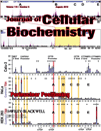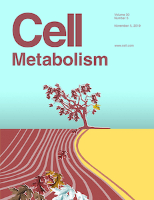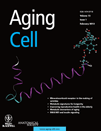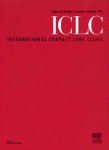
BIOCHIMICA ET BIOPHYSICA ACTA-BIOENERGETICS
Scope & Guideline
Leading the Charge in Biochemical Discoveries
Introduction
Aims and Scopes
- Mitochondrial Bioenergetics and Function:
The journal emphasizes research on mitochondrial processes, including oxidative phosphorylation, ATP synthesis, and mitochondrial dynamics. Studies often focus on the molecular mechanisms underlying energy production and the role of various proteins and complexes in these processes. - Photosynthetic Energy Conversion:
Research on the mechanisms of photosynthesis, particularly in cyanobacteria and plants, is a core focus. This includes studies on light-harvesting complexes, electron transfer pathways, and the structural dynamics of photosystems. - Molecular Mechanisms of Electron Transfer:
The journal publishes articles investigating the molecular basis of electron transfer in various systems, including mitochondrial respiratory chains and photosynthetic complexes. This includes studies on redox reactions, proton transfer, and the role of cofactors. - Impact of Environmental Factors on Bioenergetics:
Research exploring how environmental factors such as light intensity, temperature, and nutrient availability affect bioenergetics is highlighted. This includes studies on the acclimation of photosynthetic organisms to stress conditions. - Metabolic Pathways and Regulation:
The journal covers studies on metabolic pathways related to energy production, including the regulation of mitochondrial function and interactions between different metabolic processes. This includes research on metabolic reprogramming in response to various stimuli.
Trending and Emerging
- Advanced Imaging and Spectroscopy Techniques:
There is an increasing incorporation of advanced imaging and spectroscopy methods to study bioenergetic processes at the molecular level. Techniques such as cryo-electron microscopy and time-resolved spectroscopy are becoming more prevalent, allowing for detailed insights into dynamic processes. - Interdisciplinary Approaches to Bioenergetics:
Research integrating bioenergetics with systems biology, computational modeling, and synthetic biology is on the rise. This trend reflects a broader understanding of energy dynamics within cellular systems and the application of interdisciplinary tools to tackle complex biological questions. - Impact of Mitochondrial Dynamics on Health:
Studies focusing on how mitochondrial dynamics, including fission and fusion processes, influence cellular health, disease, and aging are gaining traction. This includes research on mitochondrial quality control and its implications for metabolic diseases. - Environmental and Ecological Influences on Bioenergetics:
Research exploring the impact of environmental stressors on energy metabolism, particularly in photosynthetic organisms, is increasingly relevant. This includes studies on how climate change and nutrient limitations affect bioenergetic efficiency. - Therapeutic Applications of Bioenergetics Research:
Emerging themes include the exploration of therapeutic strategies targeting bioenergetics for diseases, such as cancer and neurodegenerative disorders. Research is increasingly focused on how manipulating bioenergetic pathways can improve health outcomes.
Declining or Waning
- Traditional Metabolic Studies:
There seems to be a reduced emphasis on classical studies of metabolic pathways without a strong focus on their molecular mechanisms or bioenergetic implications. Research that does not integrate modern techniques or insights may be less represented. - Single-Organism Studies:
Research focused solely on individual organisms, particularly in isolation from broader ecological or metabolic contexts, appears to be declining. There is a growing trend toward studies that consider interactions within microbial communities or ecosystems. - Static Structural Studies:
While structural biology remains important, there is a noticeable decrease in publications focused purely on static structures without accompanying functional studies. The trend is shifting towards dynamic studies that incorporate functional insights alongside structural data. - Basic Physiological Measurements:
Basic physiological assessments of mitochondrial function or photosynthetic efficiency, without comprehensive mechanistic insights or innovative methodologies, seem to have less representation in recent issues.
Similar Journals

Cancer & Metabolism
Exploring the Intersection of Oncology and MetabolismCancer & Metabolism is a distinguished open-access journal published by BMC, dedicated to advancing the understanding of the complex interactions between cancer biology and metabolic processes. Since its inception in 2013, it has provided a platform for researchers, clinicians, and students to disseminate groundbreaking research and innovative findings within the fields of oncology and metabolism. The journal, identified by its E-ISSN 2049-3002, is recognized for contributing valuable insights into metabolic alterations that influence cancer progression, treatment responses, and overall patient outcomes. With a firm commitment to open access, Cancer & Metabolism ensures that research is freely available to the global scientific community, fostering collaboration and accelerating discoveries that can lead to improved therapeutic strategies. As a vital resource in cancer research, this journal appeals to a broad audience, including researchers looking to share their latest findings, professionals seeking to stay informed on cutting-edge developments, and students eager to delve into the relationship between metabolism and cancer.

JOURNAL OF CELLULAR BIOCHEMISTRY
Advancing the Frontiers of Biochemical ResearchJournal of Cellular Biochemistry is a premier academic journal dedicated to advancing the field of biochemistry and cellular biology. Published by Wiley, this influential journal has a significant impact factor that underscores its relevance and authority within the scientific community. With its ISSN 0730-2312 and E-ISSN 1097-4644, the journal has been on the frontier of research since its inception in 1982, and is expected to continue publishing cutting-edge studies through 2024. As evidenced by its ranking in the 2023 Scopus Quartiles, it holds a rank of Q2 in Biochemistry and Q3 in both Cell and Molecular Biology, placing it among the top tiers of scientific journals in these disciplines. The Journal of Cellular Biochemistry serves as a vital resource for researchers, professionals, and students alike, providing a platform for the dissemination of innovative ideas and findings that shape our understanding of cellular processes and biochemical pathways. Though it does not currently offer Open Access options, its robust peer-review process ensures that each publication meets the highest academic standards, thus solidifying its esteemed position in the landscape of biochemical research.

Molecular Metabolism
Catalyzing Knowledge in Cell and Molecular BiologyMolecular Metabolism is a premier, open-access journal published by Elsevier, dedicated to advancing the understanding of metabolic processes at the molecular level. With an ISSN of 2212-8778 and a proud presence in Germany, the journal has made significant contributions to the fields of Cell Biology and Molecular Biology, consistently achieving a Q1 ranking in both categories as of 2023. The journal’s scope encompasses cutting-edge research that explores metabolic pathways, their regulation, and implications for human health, underscoring the interplay between metabolism and various biological functions. Researchers and professionals benefit from the journal’s robust visibility, as it ranks #40 among 410 journals in Molecular Biology and #35 among 285 in Cell Biology according to Scopus metrics, placing it in the top 10 percentile in its field. With open access since 2012, Molecular Metabolism ensures that groundbreaking research is available to all, fostering a collaborative and inclusive academic environment. Its commitment to excellence and accessibility makes it an invaluable resource for those invested in metabolic research.

BIOLOGICHESKIE MEMBRANY
Exploring the Frontiers of Cell and Molecular BiologyBIOLOGICHESKIE MEMBRANY is a critical journal in the field of Cell Biology and Molecular Biology, published by MEZHDUNARODNAYA KNIGA in the Russian Federation. With an ISSN of 0233-4755, this journal has been serving the academic community since 1996 and continues to publish cutting-edge research that advances our understanding of biological membranes and their functions. Despite being classified in Q4 quartiles for both Cell and Molecular Biology in the 2023 category rankings, the journal presents a unique platform for emerging research within these pivotal areas. Researchers, professionals, and students alike will find valuable insights in its pages as it seeks to foster a collaborative environment that encourages knowledge sharing. Although currently not available as an open-access journal, it remains an essential resource for those looking to deepen their knowledge and contribute to ongoing discussions in the biological sciences. The journal’s commitment to publishing quality research is underscored by its continuous coverage until 2024, making it a sustained reference in the field.

ACS Organic & Inorganic Au
Elevating Research Standards in Chemical InnovationACS Organic & Inorganic Au, published by the American Chemical Society, stands as a premier open-access journal dedicated to advancing the fields of organic and inorganic chemistry. Since its inception in 2021, this journal has swiftly risen to prominence, achieving a commendable Q1 classification in Inorganic Chemistry, Organic Chemistry, and Physical and Theoretical Chemistry as of 2023. With an ISSN of 2694-247X, it provides a vital platform for researchers, professionals, and students to disseminate their findings and engage with cutting-edge work across converged disciplines. Operating from its headquarters in Washington, DC, ACS Organic & Inorganic Au is committed to fostering a collaborative research environment, encouraging rigorous peer review, and ensuring the wide accessibility of high-quality scholarly articles. With its open-access model, readers worldwide can freely access and utilize research findings, promoting a global exchange of knowledge crucial for driving innovation in chemistry.

FEBS LETTERS
Where Innovation Meets Biological DiscoveryFEBS LETTERS, published by Wiley, is a prestigious journal that has firmly established its place in the fields of biochemistry, biophysics, genetics, molecular biology, cell biology, and structural biology. With an esteemed history dating back to 1968, this journal continues to be a vital resource for researchers and professionals involved in the biological sciences. It boasts impressive quartile rankings, including Q1 statuses in several categories such as Biochemistry and Genetics, reflecting its high impact factor and significant contribution to scientific discourse. FEBS LETTERS provides a platform for innovative findings and critical reviews, fostering the exchange of knowledge and ideas within the scientific community. Although it operates under a subscription model, the journal ensures broad dissemination of groundbreaking research through its rigorous peer-review process. The vibrant discussions encouraged by articles published in FEBS LETTERS aim to inspire current and future generations of scientists to push the boundaries of biological understanding, making it an indispensable resource for anyone dedicated to advancing their knowledge in these dynamic fields.

Cell Metabolism
Exploring the frontiers of cellular energy.Cell Metabolism is an esteemed journal published by CELL PRESS, dedicated to advancing the understanding of metabolic processes within cell biology, molecular biology, and physiology. With an impactful 2023 ranking placing it at Q1 in multiple categories and earning a distinguished position in the top percentiles of its respective fields, this journal serves as an essential resource for researchers, professionals, and students who are investigating the dynamic roles of metabolism in health and disease. Its rigorous peer-review process ensures high-quality publications that reflect the latest advancements in metabolic research. Since its inception in 2005, Cell Metabolism has become a pivotal platform for disseminating critical findings that not only expand scientific knowledge but also foster innovative approaches to tackle metabolic disorders. By prioritizing accessibility and scholarly excellence without the Open Access model, it remains a premier source for cutting-edge research insights.

AGING CELL
Innovating Solutions for Healthy AgingAGING CELL is a premier peer-reviewed journal published by Wiley, specializing in the rapidly evolving field of aging research and cell biology. Established in 2002 and enjoying an impressive track record as evidenced by its Q1 ranking in both Aging and Cell Biology categories for 2023, the journal has become a vital resource for researchers and professionals alike. With a significant impact factor highlighting its scholarly influence, AGING CELL offers an open access model since 2014, ensuring that groundbreaking research is accessible to the global community. The journal covers a wide array of topics related to the mechanisms of aging at the cellular and molecular levels, making it essential reading for anyone invested in understanding the complexities of aging processes and their implications for health and disease. With a broad international readership based in the United Kingdom and beyond, AGING CELL is dedicated to disseminating high-quality research that impacts scientific understanding and fosters advances in the field.

Physiological Reports
Transforming Physiological Understanding for a Global AudiencePhysiological Reports is a pioneering open-access journal published by WILEY, dedicated to advancing the field of physiology through the dissemination of high-quality research. Since its inception in 2013, this journal has provided a platform for innovative studies in both general physiology and medical physiology, making significant contributions to our understanding of biological processes. With an impact factor that reflects its growing influence—as evidenced by its placement in the Q2 category for physiology and medical physiology in 2023—Physiological Reports is positioned as a vital resource for researchers and practitioners alike. The journal encourages the submission of diverse studies ranging from cellular mechanisms to systemic physiology, presenting a unique opportunity for authors to reach a global audience without access barriers. It has established a reputation for rigorous peer review and timely publication, ensuring that cutting-edge research is readily available to stimulate further inquiry and collaboration in the scientific community.

AMERICAN JOURNAL OF PHYSIOLOGY-ENDOCRINOLOGY AND METABOLISM
Advancing insights into endocrinology and metabolism.American Journal of Physiology-Endocrinology and Metabolism, published by the American Physiological Society, stands as a leading platform for disseminating high-quality research in the fields of endocrinology, diabetes, and metabolism, as well as general physiology. With an impressive impact factor placing it within the Q1 category across multiple relevant disciplines (Endocrinology, Diabetes and Metabolism; Physiology; and Medical Physiology), this journal reflects its authoritative position in the scientific community. Spanning from 1980 to 2024, the journal consistently publishes groundbreaking studies and significant findings that advance our understanding of hormonal regulation and metabolic processes. Although it does not currently offer open access, it provides valuable resources for researchers, professionals, and students alike, eager to stay at the forefront of advancements in physiological sciences. Addressed in Rockville, Maryland, its commitment to excellence and rigorous peer review ensures that every article contributes essential insights to the field.